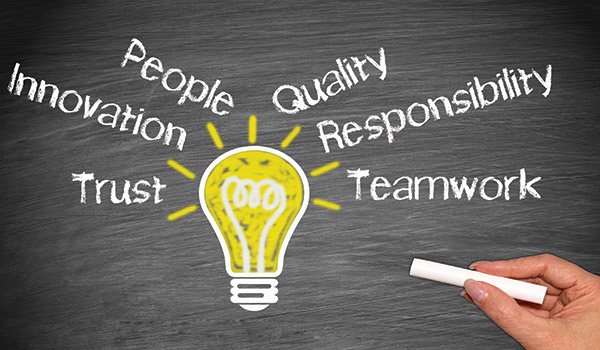 Over the past decade, there has been an explosion of interest in mindfulness-based training programs. The impact of the mindful movement can be seen across the fields of psychotherapy, stress management, coaching and sports performance.
Over the past decade, there has been an explosion of interest in mindfulness-based training programs. The impact of the mindful movement can be seen across the fields of psychotherapy, stress management, coaching and sports performance.
In the workplace, mindfulness is being hailed for its potential to help employees and leaders stay in contact with present moment experience, increase psychological health, improve task focus and enhance people’s ability to choose the most effective action in any given moment.
Mindful Leadership
One topic that has attracted a lot of recent interest is the use of mindfulness for leadership development. In The Mindful and Effective Employee, Professor Frank Bond discusses how he evaluated the effects of adding mindfulness and values principles to a transformational leadership training program being delivered to leaders of financial trading teams. He found that the teams of leaders who experienced this mindfulness-enhanced training had better mental health, and made £17 million (or $27 million) more in the eight months following the training, when compared to trading teams with leaders who had received another type of training.
These developments suggest a promising future for mindfulness training in the workplace. We have plenty of evidence that different types of mindfulness training improve employees’ psychological health; we are now seeing those benefits being extended to team and organizational effectiveness.
Adapting Mindfulness for the Workplace
Some recent books describe how mindfulness training can be adapted for workplace settings. Chade-Meng Tan’s Search Inside Yourself (2012) describes the mindfulness training delivered to Google employees. Michael Chaskalson’s The Mindful Workplace (2011) explains how the most common mindfulness programs can be adapted for workplace delivery. The Mindful and Effective Employee (2013), which I co-wrote with Frank W. Bond, Ph.D., and Fredrik Livheim, M.S., describes a mindfulness approach known as “acceptance and commitment therapy” (ACT), which has been delivered within a wide range of organizations.
While some programs focus solely on developing mindfulness skills, ACT uses mindfulness training alongside values clarification and action techniques. Research indicates that combining mindfulness and personally valued action is an effective way of improving mental health and behavioral effectiveness.
The techniques used in our training can seem quite simple, and yet they often have a surprisingly powerful influence on employees’ work and personal lives. Here are three practices you can try out for yourself:
Practice shifting from “automatic pilot” to “mindful awareness.” The purpose of this exercise is to reveal how much time we humans spend in automatic pilot mode, and to show how mindfulness can be developed by bringing awareness to daily activities.
Choose any routine activity that you usually perform on automatic pilot (without much awareness). Common examples are showering, brushing teeth, driving and eating lunch. This week, instead of performing the activity on automatic pilot, become more aware of your present moment experience — simply noticing, without judgment, the movements and sensations in your body as you perform the activity; noticing your surroundings; noticing any smells, sounds and tastes. Regularly practicing this exercise (perhaps using a different activity each week) can help integrate mindfulness into your daily life.
Connect with your personal values. Values can be defined as the personal strengths or qualities you most want to express in your behavior. Your values capture the way you most want to be in your day-to-day life. Examples of values are caring, curiosity, gratitude, patience, industry and self-care. To help clarify personally meaningful values, we provide our clients with a list of values, and invite them to choose their “top 5.” (For a list of values, see Russ Harris’s free ACT resources for The Confidence Gap at www.actmindfully.com.au).
Engage in small, value-inspired actions. Once you are aware of a personally important value, you can ask yourself, “What can I do today/this week that would help bring this value to life?” As long as it is value-consistent, the size of the action is unimportant. We train our clients to be mindful of any “unhelpful” thoughts and feelings that have the potential to “hijack” value-guided behavior. With mindfulness, there is no need to avoid, reduce or change such thoughts and feelings. Instead, we can learn to notice them for what they are, without necessarily letting them dictate what we do. Increasing engagement in small, personally valued actions often leads to a renewed sense of meaning, purpose and vitality. In addition to benefitting the individual, this translates to invigorated productivity in the workplace.
Paul E. Flaxman, Ph.D., is co-author of The Mindful and Effective Employee: An Acceptance and Commitment Therapy Training Manual for Improving Well-Being and Performance and a senior lecturer in psychology at City University London. Evaluations of Dr. Flaxman’s workplace training programs have been published in numerous scientific papers and books, and he has been invited to present his research at conferences around the globe.














Speak Your Mind
You must be logged in to post a comment.